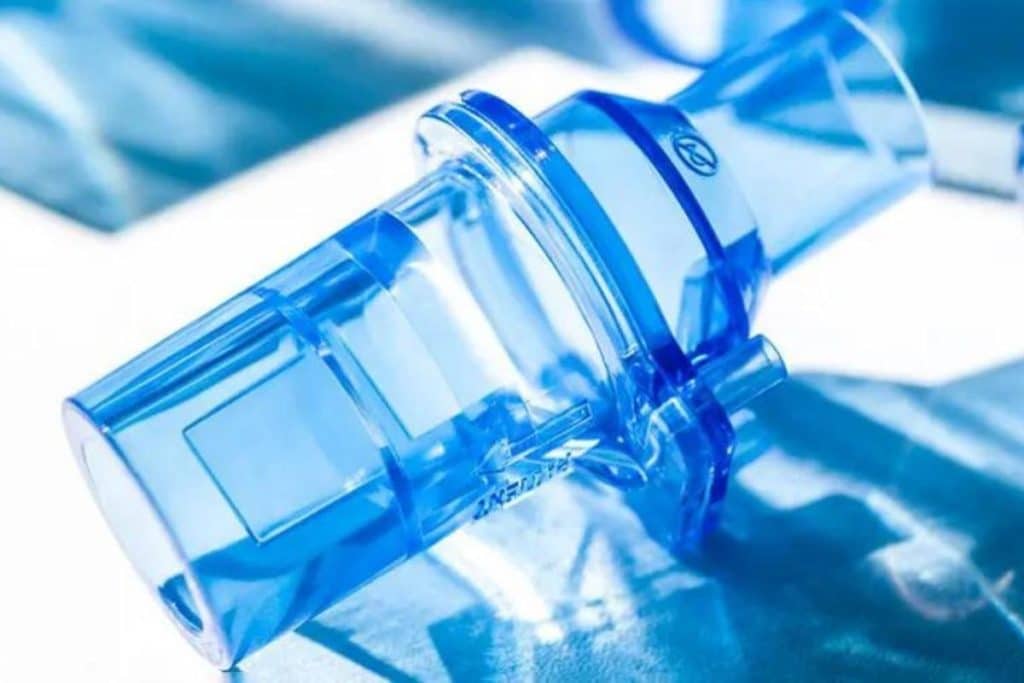Hamilton Medical makes ventilation solutions which operate intelligently for critical-care transports and intensive-care units. During the Covid-19 pandemic, Hamilton built a new site to produce their ventilators in Reno, Nevada, partially supported by General Motors.
This facility began 100% production within a few months, able to deliver thousands of Hamilton-T1 ventilators bought by the US Department of Health and Human Services back in fall 2020.
More about Proximal Flow Sensors
This type of equipment has been one of the main items produced by Hamilton since the early 1980s since it could monitor data from a patient’s airway opening and share it with medical professions. A good sensor must be able to detect even very slight pressure changes to show when the patient is trying to breathe naturally and then adjust the air flow accordingly.
Mass-producing such systems has posed various problems, including those to do with cost and assembly. The good news for Hamilton Medical is that they had already invested in development and design for many years before collaborating with local machine builders and also Emerson to assemble their all-plastic air flow sensors with Branson ultrasonic welding technology.
This type of welding combines compressive force with high-frequency vibration to make friction which heats and melts the interface of thermoplastic parts, allowing them to permanently join. This is a great process for flow-sensor assembly because it gets rid of mechanical stress, heat and contamination risks to the fragile membrane of the sensor.
Fully Automated Flow-Sensor Assembly
Imperia Systems in Switzerland built the first totally automated flow-sensor systems under Hamilton supervision. Emerson provided Branson 2000Xc ultrasonic welders as well as integration and technical support and weld tooling to fast-track this project. After delivery, the system was approved for installation, operation and performance by September 2020.
To assemble these medical devices, the assembly robot picks and then positions 3 sensor components on the lower weld tool. The first piece is the bottom half which goes into the membrane-containing flap.
Next up, ring-membrane position is verified and then the upper half goes on top. After that, the welder actuator comes down and compresses the upper weld tooling down on to the components of the sensor. The ultrasonic weld is achieved by compressive force and this takes less than a second.
While the ultrasonic weld is undertaken the welder’s digital controls weld real-time parameters and save records for each part. Branson welders have various data security features including high-grade data encryption along with hierarchical password protection.
Global manufacturing standards such as ISO 13485 are covered and the compliance also extends to device part traceability and production according to the EU’s Medical Device Regulation requirements plus those of the FDA’s 21-part CFR Regulation Part 11.
How Does a Medical Ventilator Work?
The aim of a ventilator is to offer respiration support to the lungs of someone who cannot breathe by themselves well enough after a respiratory disease or injury.
The first part is intubation, when the patient has an endotracheal tube fitted, and then once that is in place, a ventilator can provide oxygen to the lungs while removing carbon dioxide from them. There are various modes to choose from depending on how well or otherwise the patient can breathe for themselves.
Modern ventilators are adaptive so as a patient can breathe easier for themselves the machine adjusts accordingly.
Digital controls enable a respirator to deliver the exact amount of oxygen required and remove the amount of carbon dioxide necessary. The exhalation valves open during expiration to relieve pressure while carbon dioxide rich gas escapes via the alveoli from the lungs to exit the body.






